
Symphyotrichum frondosum is a species of flowering plant in the family Asteraceae native to western North America. Commonly known as short-rayed alkali aster, it is an annual or perennial herbaceous plant that may reach 140 centimeters tall.
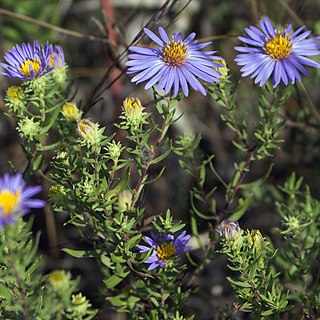
Symphyotrichum oblongifolium, commonly known as aromatic aster or oblong-leaved aster, is a species of flowering plant in the family Asteraceae and is native to parts of the eastern and central United States. It is an uncommon herbaceous perennial that reaches heights of 10–80 centimeters and blooms August–November with many flower heads in various shades of purple.

Symphyotrichum georgianum is a rare species of flowering plant in the Asteraceae, the aster family. Its common name is Georgia aster. It is native to the southeastern United States where it is known from Alabama, Florida, Georgia, North Carolina, and South Carolina. As of 2013, it may be extirpated from the state of Florida.
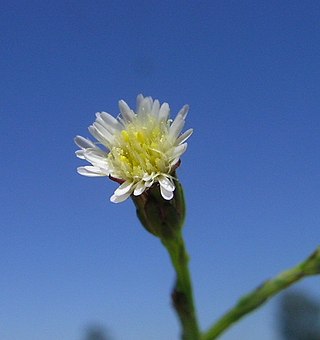
Symphyotrichum subulatum, commonly known as eastern annual saltmarsh aster or, in Britain and Ireland where it is naturalized, annual saltmarsh aster, is an annual plant in the family Asteraceae native to the eastern United States and the Gulf Coast to Texas. The species grows primarily in coastal salt marshes, although in the Ozarks it occurs as a non-marine weedy variety.
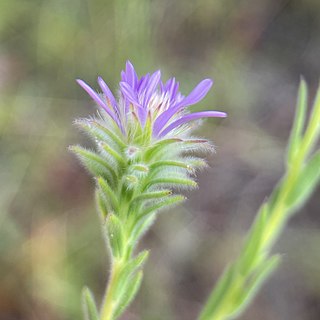
Symphyotrichum plumosum is a species of flowering plant in the family Asteraceae endemic to Florida in the United States. Commonly known as plumose aster, it is a perennial, herbaceous plant that may reach 40 to 100 centimeters tall. Its flowers have rose-purple ray florets and yellow turning to purple disk florets. It is of conservation concern.

Symphyotrichum hendersonii is a species of flowering plant in the family Asteraceae native to the northwestern United States. Commonly known as Henderson's aster, it is a perennial, herbaceous plant that may reach 70 to 150 centimeters tall. Its flowers have purple ray florets and yellow disk florets.
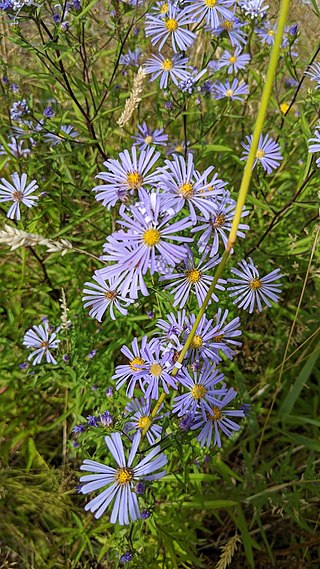
Symphyotrichum subspicatum is a species of flowering plant in the family Asteraceae native to western North America. Commonly known as Douglas's aster, it is a perennial, herbaceous plant that may reach 40 to 120 centimeters tall. Its flowers have violet ray florets and yellow then reddish disk florets.

Symphyotrichum nahanniense is a species of flowering plant in the family Asteraceae endemic to Northwest Territories, Canada.
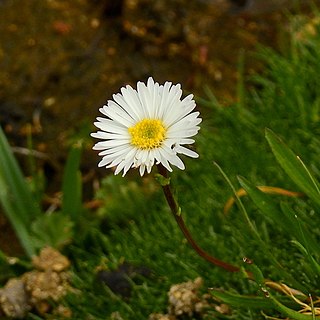
Symphyotrichum glabrifolium is a species of flowering plant in the family Asteraceae native to Argentina and Chile where it inhabits wet meadows and stream edges. It is a perennial, herbaceous plant that grows 5 to 25 centimeters tall. Its flowers have white or lilac ray florets and yellow disk florets.

Symphyotrichum patagonicum is a species of flowering plant in the family Asteraceae endemic to the Argentinian provinces of Chubut, Mendoza, Neuquén, and Santa Cruz. It is an annual, herbaceous plant that grows 3 to 30 centimeters tall. Its flowers have short white ray florets in 3 or 4 series and numerous disk florets.

Symphyotrichum peteroanum is a species of flowering plant in the family Asteraceae endemic to Argentina and Chile. It is a perennial, herbaceous plant that grows 20 to 60 centimeters tall. Its flowers have white ray florets in one series that are 6–8 millimeters long. It grows in tall forests with trees that exceed 15 meters at elevations of 1,000–2,200 meters in humid montane ecosystems.
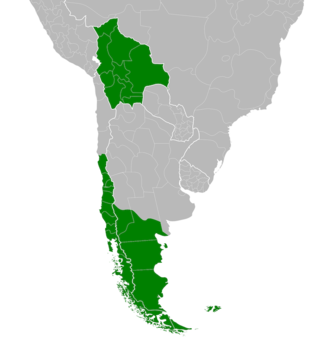
Symphyotrichum vahlii is a species of flowering plant in the family Asteraceae native to South America, specifically Bolivia, Chile, Argentina, and the Falkland Islands. It is herbaceous and grows 10 to 60 centimeters tall. Its flowers have white ray florets of length 6 millimeters. It grows in wetland areas of tall forests with trees that exceed 15 meters. One infraspecies is accepted, Symphyotrichum vahlii var. tenuifolium, in addition to the autonym S. vahlii var. vahlii.

Symphyotrichum regnellii is a species of herbaceous flowering plants in the family Asteraceae native to Argentina and Brazil. It grows to heights of 60 to 120 centimetres, and its flowers have white to pink ray florets that have lengths up to 3 millimetres. It grows in swamps and wet savannas.
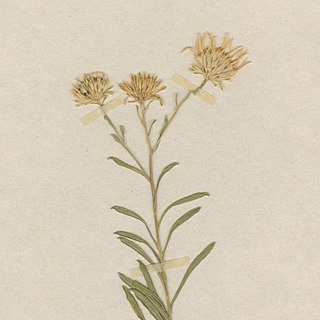
Symphyotrichum burgessii is a species of flowering plant in the family Asteraceae native to Cuba. It is a perennial, herbaceous plant with a height of 5 decimeters or less. Its white ray florets are 5–8 millimeters in length.

Symphyotrichum hintonii is a species of perennial, herbaceous, flowering plant in the family Asteraceae native to Guerrero, Mexico. It grows in oak and oak-pine woods at elevations of 1,400–2,200 meters, blooming white ray florets November–January. It reaches heights of about 40–80 centimeters.
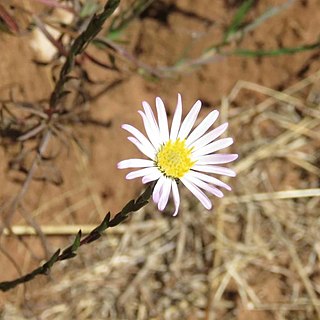
Symphyotrichum moranense is a species of flowering plant in the family Asteraceae. It is a perennial and herbaceous plant that reaches about 90 centimeters in height. Its white ray florets open October through April, and it is native to Mexico.

Symphyotrichum bimater is a species of flowering plant in the family Asteraceae that is native to the states of Chiapas and Oaxaca in Mexico, and to Guatemala. It is perennial and herbaceous and grows to heights of 30–46 centimeters. Its white ray florets bloom May–December, and it grows in pine-oak woods, ravines, slopes, and grassy openings at elevations 1,000–2,150 meters.

Symphyotrichum chihuahuense is a species of flowering plant in the family Asteraceae that is native to Chihuahua and Durango, Mexico. It is perennial and herbaceous and reaches heights of 20–35 centimeters. Its white ray florets open June–September, and it grows in grasslands and oak–pine woods at elevations 1,800–2,500 meters.

Symphyotrichum purpurascens is a species of flowering plant in the family Asteraceae native to areas of Mexico and Guatemala.





















